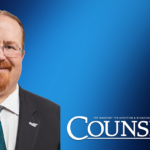Share
The journey to recovery from substance use disorder (SUD) is a complex and challenging one, both for individuals seeking recovery and for those supporting them. It is a non-linear process, with ups and downs, and requires a comprehensive understanding and support system to help individuals achieve and sustain recovery. However, the lack of understanding and support for recovery has been a significant barrier for individuals seeking help and has also impacted the public and medical community responsible for creating support infrastructures.
In recent years, there have been significant changes in the recovery support systems, with a focus on integrating current changes in ASAM PPC (Recovery Capital), ICD 10/DSM (Z Codes), and SAMSHA (Harm Reduction). These changes have shaped the perception and inclusion of recovery from SUD in other systems, highlighting the importance of building and sustaining recovery. Recovery is not just about abstinence from substance use, but it also includes improvements in functioning, psychological well-being, and overall quality of life.
One of the significant changes in the recovery support systems is the evolution from the initial concept of recovery-orientated systems of care (ROSCO) to the more recent recovery cities concepts. This shift emphasizes the view of recovery as a continuum, with various service points such as treatment, recovery community centers, and harm reduction services. It recognizes that recovery is a lifelong journey and requires a range of support services at different stages.
Moreover, there has been a shift towards measuring recovery outcomes as a vital sign on the journey of recovery. This is where ASAM PPC (Recovery Capital) plays a crucial role. Recovery capital refers to the personal, social, and environmental resources that support an individual’s recovery journey. It includes factors such as stable housing, employment, social support, and access to healthcare. By assessing recovery capital, we can better understand an individual’s progress in recovery and identify areas that need improvement.
Another significant change in the recovery support systems is the inclusion of ICD 10/DSM (Z Codes) in measuring the social determinants of health. These codes provide a way to document the social and environmental factors that may impact an individual’s health, including their recovery journey. By understanding these factors, we can better tailor support services to meet the specific needs of individuals in recovery.
In conclusion, the integration of ASAM PPC, ICD 10/DSM (Z Codes), and SAMSHA in recovery support systems has brought about significant changes in the understanding and support for individuals on the journey to recovery from SUD. It highlights the importance of viewing recovery as a continuum and the need for a comprehensive support system that addresses the various aspects of an individual’s life. By measuring recovery outcomes through recovery capital and social determinants of health, we can better support individuals in achieving and sustaining recovery. As we continue to evolve and improve our understanding of recovery, it is crucial to recognize the complexities of the recovery journey and provide the necessary support for individuals to overcome the challenges they may face.
References
- Becker, D. R., Torrey, W. C., Toscano, R., Wyzik, P. F., & Fox, T. S. (1998). Building recovery-oriented services: Lessons from implementing Individual Placement and Support (IPS) in community mental health centers. Journal.
- Bergman, B. G., & Kelly, J. F. (2021). Online digital recovery support services: An overview of the science and their potential to help individuals with substance use disorder during COVID-19 and beyond. Journal.
- Bergman, B. G., Kelly, J. F., Fava, M., & Evins, A. E. (2021). Online recovery support meetings can help mitigate the public health consequences of COVID-19 for individuals with substance use disorder. Journal.
- Holttum, S. (2012). Research watch: Recovery as a personal journey: How mental health services are trying to support it. Journal.
- Ingel, S., Barberi, D., Rudes, D. S., & Taxman, F. S. (2022). Lessons learned from a peer support program for individuals seeking substance use recovery. Journal.
- LaPlante, D., Whelshula, M., Gray, H., & Nelson, S. (2021). Understanding American Indian youth in residential recovery from substance use disorder: Risk and protective experiences and perceived recovery support. Journal.
- Laitman, L., Kachur-Karavites, B., & Stewart, L. P. (2014). Building, engaging, and sustaining a continuum of care from harm reduction to recovery support: The Rutgers Alcohol and Other Drug Assistance Program. Journal.
- Patton, R., Chou, J., Kestner, T., & Feeney, E. (2024). Exploring social connectedness, isolation, support, and recovery factors among women seeking substance use treatment. Journal.
- Scannell, C. (2021). By helping others we help ourselves: Insights from peer support workers in substance use recovery. Journal.
- Secker, J., Membrey, H., Grove, B., & Seebohm, P. (2002). Recovering from illness or recovering your life? Implications of clinical versus social models of recovery from mental health problems for employment support services. Journal. Thomas, K. A., & Rickwood, D. J. (2015). One woman’s journey of recovery from mental illness—Hopes, back-up plans, rebuilding self and service support. Journal.
About Me
Pete Nielsen is the President & Chief Executive Officer for the California Consortium of Addiction Programs and Professionals (CCAPP), CCAPP Credentialing, CCAPP Education Institute, and the National Behavioral Health Association of Providers (NBHAP). CCAPP is the largest statewide consortium of addiction programs and professionals, and the only one representing all modalities of substance use disorder treatment programs. NBHAP is the leading and unifying voice of addiction-focused treatment programs nationally. Mr. Nielsen has worked in the substance use disorders field for 20 years. In addition to association management, he brings to the table experience as an interventionist, family recovery specialist, counselor, administrator, and educator, with positions including campus director, academic dean, and instructor.
Mr. Nielsen is the secretary of the International Certification and Reciprocity Consortium and the publisher for Counselor magazine. He is a nationally known speaker and writer published in numerous industry-specific magazines. Mr. Nielsen holds a Master of Science in Counseling Psychology and a Bachelor of Science in Business Management.











 Counselor Magazine is the official publication of the California Association of Addiction Programs and Professionals (CCAPP). Counselor offers online continuing education, article archives, subscription deals, and article submission guidelines. It has been serving the addiction field for more than thirty years.
Counselor Magazine is the official publication of the California Association of Addiction Programs and Professionals (CCAPP). Counselor offers online continuing education, article archives, subscription deals, and article submission guidelines. It has been serving the addiction field for more than thirty years.